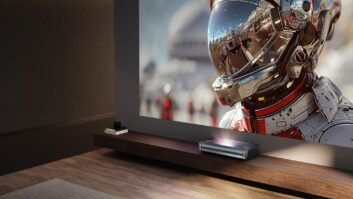Within the diverse field of residential system installations, there are a lot of companies who perform all kinds of installations. These vary greatly in scale, complexity, and quality.
At the low end is a retailer, large or small, who sells a big-screen TV and sends two guys in a truck to deliver it and hook it up. At the other end is a $1 million-plus automation system installed by a highly trained team that pushes the envelope of technology, craftsmanship, and grandiosity.
A client can spend a hundred dollars for your service and be happy. On the other hand, he can spend a million dollars and be very unhappy in the end. I have seen the aspirations of high technology in cutting-edge installations cause frustration and angst for disappointed purchasers.
No matter where you find your company on the scalefrom providing tract home prewires to hooking up entertainment systems for a princes yachteach job will present obstacles and have the same challenges and opportunities to make your job a success or a failure.
All jobs start and end with customer relations. We want to make them happy and every layer of contact that they have with your company plays a part in that process. In this business you should consistently deliver red carpet service.
What makes for a professional installation? Lets focus on the key elements of design and installation of your system that the client will live with for many years.
Design: A professional installation begins with good design that satisfies the needs and wishes of the clients and, in many cases, their architects and interior decorators. It takes insightful conversation and a discovery process to create the perfect solution for your clients. Part of the salesmans challenge is that clients are not familiar with all of the gadgets that we sell, how components integrate, and the reasons behind our choices as we design and recommend systems. Designs that work well with furniture plans, lighting, color, and texture, without sacrificing the emotional impact of picture and sound, are not easily accomplished. Creating a design that works with the essential harmony of the style and decor of the home without intruding with ugly boxes is an art.
Infrastructure: It can take years to complete all of the steps in a great system. The initial design must contain all of the racks, wiring, electrical needs, and accessories needed to support the system now and include forward thinking to future proof the home in the face of rapidly changing technology. Good placement of racks, TVs , and components is critical.
Project Management: You will work with architects, builders, interior decorators, jobsite supervisors, electricians, cabinetmakers and more. At every step you will need to work well with them, coordinate details and changes with them professionally.
Installation: If the new 42-inch plasma TV fits correctly into the cabinet, is the right screen size for the distance, viewing angle, and height, then thats a good start. If the TV cabinet is positioned properly so that the screen is not reflecting glaring sunlight, then youre also on the right path. All recessed ceiling speakers should line up with light cans. The location of every speaker, control, and device should melt into the character of the home.
Fit and Finish: The installed equipment should be fitted for rackmounts or rotating shelves that are planned to facilitate good looks, use, and service access. A closing door over the gear helps it disappear into cabinets or closets. Fabric choices and faux finishes of speakers and wiring must be carefully and cleanly hidden and managed.
User-Friendly Control: After all is said and done, the clients will move into their new home and pick up their new remote control. When they push the first button, that is the defining moment of truth, begging a thumbs up or thumbs down judgment of your work.
The remote is the dominating focal point in A/V functions. If you got this right, its because you saw the big picture in your design from day one. All functional design starts and ends with the remote, whether it is a wall-mounted keypad, a handheld intellicontrol, a colorful touchpad, or some giant new touchscreen. If you want a happy client, make sure those buttons works.
Whether your system is large or small, take pride in your work and deliver happiness to your clients. If you do so, word will spread about your professionalism. If you treat your clients well and do good business, then good business will come to you.





